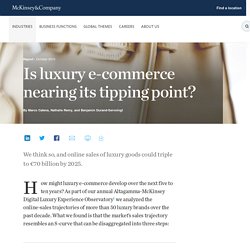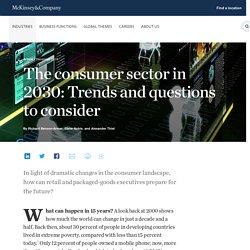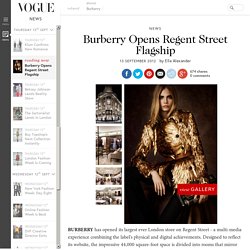

The Luxury Brand Balancing Act. LONDON, United Kingdom — Fashion’s luxury megabrands have long struck a winning balance between exclusivity and accessibility, driving strong financial results by creating expensive iconic products, which, paired with elaborate marketing campaigns, emit a halo of perceived exclusivity around lower price products — such as cosmetics, fragrances and small leather goods — designed to sell at high volume to aspirational consumers.

After all, real exclusivity offers little opportunity for scale and the likes of Louis Vuitton and Gucci did not build multi-billion-dollar businesses by selling only to a handful of high net worth customers. But, as Jean-Noël Kapferer, professor of marketing at HEC Paris, writes in Luxury: How Brands Can Grow Yet Remain Rare, “The more the luxury sector grows, the more this threatens the levers of the luxury dream and the sense of what luxury evokes: the notion of rarity and of access to a privileged life, to products of exception.” Digital Access. Home. McKinsey: Online luxury fashion market booming. Online luxury fashion sales are set to grow at a rate of 18% between now and 2018 in the UK and a whopping 70% in China.

The way consumers interact with brands is becoming increasingly digitalised, with 50% of UK consumers using search engines to find luxury goods. Online sites provide, according to McKinsey & Company, a rich opportunity to increase sales growth. Luxury brands have been slow to move their offerings onto the digital market, with most brands only recently offering their goods through their own branded websites or through multi-brand e-tailors.
In recent research from McKinsey & Company, the state of the women’s online luxury fashion market is assessed. To determine the market and its trends, McKinsey completed a consumer surveys in seven markets around the world, assessing among others market growth rates and key consumer behaviour. ‘The business of creating desire’: An interview with the CEO of LVMH Fashion Group. Pierre-Yves Roussel oversees some of fashion’s best-known luxury brands.

Here, he shares his views on creativity, brand evolution, and how the Internet is—and isn’t—changing the industry. Makers of luxury goods grapple with many of the same challenges as other companies in the consumer-products and retail sectors: keeping customers happy, offering the right products through the right channels, and finding and nurturing the best talent.
LVMH Moët Hennessy Louis Vuitton, the multinational conglomerate that owns some of the world’s most successful luxury brands, is no exception. Is luxury e-commerce nearing its tipping point? We think so, and online sales of luxury goods could triple to €70 billion by 2025.

How might luxury e-commerce develop over the next five to ten years? As part of our annual Altagamma-McKinsey Digital Luxury Experience Observatory we analyzed the online-sales trajectories of more than 50 luxury brands over the past decade. What we found is that the market’s sales trajectory resembles an S-curve that can be disaggregated into three steps: Ramp-up. Luxury players investigate selling online either through partners with full-price, off-price, or events platforms or through their own e-shop. The consumer sector in 2030: Trends and questions to consider. In light of dramatic changes in the consumer landscape, how can retail and packaged-goods executives prepare for the future?

What can happen in 15 years? A look back at 2000 shows how much the world can change in just a decade and a half. Back then, about 30 percent of people in developing countries lived in extreme poverty, compared with less than 15 percent today. Only 12 percent of people owned a mobile phone; now, more than 60 percent do. Luxury Goods Worldwide Market Study Fall-Winter 2015: A Time to Act—How Luxury Brands Can Rebuild to Win. The 14th edition of the Bain Luxury Study, published by Bain & Company for Fondazione Altagamma, the trade association of Italian luxury-goods manufacturers, analyzed recent developments in the global luxury- goods industry.

The overall luxury industry tracked by Bain & Company comprises 10 segments, led by luxury cars, luxury hospitality and personal luxury goods, which together account for 80% of the total market. The industry surpassed €1 trillion in retail sales value in 2015 and delivered healthy growth of 5% year over year (at constant exchange rates), driven primarily by luxury cars (8%), luxury hospitality (7%) and fine arts (6%).
Aided by global currency fluctuations and continued purchases by “borderless consumers,” the personal luxury goods market—the “core of the core” of luxury and the focus of the Bain Luxury Study—ballooned to more than €250 billion in 2015. Currency swings affect regional performance Across Asia, performance varied widely: Burberry Regent Street Flagship Opens. 13 September 2012 Ella Alexander BURBERRY has opened its largest ever London store on Regent Street - a multi-media experience combining the label's physical and digital achievements.

Designed to reflect its website, the impressive 44,000 square-foot space is divided into rooms that mirror sections from its online counterpart - such as Bespoke, Acoustic and Experiences. The 80 Best Guerilla Marketing Ideas I’ve Ever Seen. Images speak louder than words.

Here are the 80 BEST Guerilla Marketing Examples I’ve Ever Seen. Guerrilla Marketing (Guerilla Marketing) takes consumers by surprise, makes an indelible impression, and pops up where and when people least expect it. This form of marketing is desired because it often has a high ROI. Guerrilla marketers are able to make a lasting impression without spending a lot of their marketing budget. VC IdeaScreen Information Sheet. VC IdeaHub Information Sheet. Insight Communities Information Sheet. How Many Websites Are There? Most webpages die after a couple of months.

The average lifespan is something like 100 days. That's longer than it used to be. In the late 1990s, the typical webpage lasted for around 44 days. But quantifying pieces and pages of the web gets murky pretty quickly. For one thing, finding a reliably representative sample of links for this kind of analysis is tricky if not impossible. Number of Internet Users (2015) Around 40% of the world population has an internet connection today (view all on a page ).

In 1995, it was less than 1%. The number of internet users has increased tenfold from 1999 to 2013. The first billion was reached in 2005. The second billion in 2010. The third billion in 2014. Total number of Websites. After reaching 1 billion websites in September of 2014, a milestone confirmed by NetCraft in its October 2014 Web Server Survey and that Internet Live Stats was the first to announce - as attested by this tweet from the inventor of the World Wide Web himself, Tim Berners-Lee - the number of websites in the world has subsequently declined, reverting back to a level below 1 billion. This is due to the monthly fluctuations in the count of inactive websites.
We do expect, however, to exceed 1 billion websites again sometime from late 2015 to mid 2016, and to stabilize the count above this historic milestone in 2017. From 1 website in 1991 to 1 billion in 2014, the chart and table below show the total number of websites by year throughout history: Websites By "Website" we mean unique hostname (a name which can be resolved, using a name server, into an IP Address). Dcp171778 404497. How quickly does your picture spread online ? experiment reveals all. How quickly can a photo spread on the internet ?
This is the question that this teacher has asked her Grade 5 students when discussing internet security. To make the lesson have more meaning to the kids, the teacher decided to be practical and less theoretical as she posted this picture on Facebook: The date on the note says 18th of November 2013. At the time of posting on the 27th November 2013, this picture had been liked 180 730 times and had been shared 2699 times.
Millennials will make online sharing in networks a lifelong habit. Overview of responses In a survey about the future impact of the internet, a solid majority of technology experts and stakeholders said the Millennial generation will lead society into a new world of personal disclosure and information-sharing using new media. These experts said the communications patterns “digital natives” have already embraced through their use of social networking technology and other social technology tools will carry forward even as Millennials age, form families, and move up the economic ladder.
The highly engaged, diverse set of respondents to an online, opt-in survey included 895 technology stakeholders and critics. The study was fielded by the Pew Research Center’s Internet & American Life Project and Elon University’s Imagining the Internet Center. Social Isolation and New Technology. Overview This report adds new insights to an ongoing debate about the extent of social isolation in America. A widely-reported 2006 study argued that since 1985 Americans have become more socially isolated, the size of their discussion networks has declined, and the diversity of those people with whom they discuss important matters has decreased.
In particular, the study found that Americans have fewer close ties to those from their neighborhoods and from voluntary associations. Social Networking Fact Sheet. Highlights of the Pew Internet Project’s research related to social networking. (Note: This page will be updated whenever new data is available.) As of January 2014, 74% of online adults use social networking sites. As of September 2014: 71% of online adults use Facebook23% of online adults use Twitter26% use Instagram28% use Pinterest28% use LinkedIn For a detailed demographic portrait of users of various social networking sites from September 2014, please see our recent report, Social Media Update 2014. 33 Social Media Facts and Statistics You Should Know in 2015. 22 Social Media Facts and Statistics You Should Know in 2014. 17 Very Surprising Social Media Facts. 2015 Social Media Infographic: Helpful Statistics and Fun Facts - Growing Social Media. Five Shocking Facts That Will Change Your Entire Approach to Social Media.
Social media facts and statistics 2015 you should know. Software to partner, invest & license technologies. Imaginatik. Home Page. Contact Us — CHAORDIX. Logos. Web design. Naming. The world's best creative team. Co-Creation a Better World - Battle of Concepts. Solve your innovation challenges at IdeaConnection.com.
InnoCentive Idea Management (IC IM) Influence. Open Innovation & Crowdsourcing Examples. Co Creation Morphology pdf. Prahalad%20CK%20Ramaswamy%20V Co Creation%20Experience The%20next%20practice%20In%20Value%20Creation%202004%20. 3 tactics large consumer goods brands are using to win over millennials. Collaborative economy report. Marketing to millennials: the rise of content co-creation. 25 Fascinating Social Media Facts & Statistics You Should Know. Social media facts Archives - Digital Vidya. 25 Social Media Facts For The End of 2015. Collaboration and Co-Creation for Brand Innovation. Ogilvy launches new brand innovation unit, K1ND. Do You have the Right Content Strategy For Your Online Community? Grow Your Online Community With The New Google Plus. Building an Online Community: 300 Stories in 10 Months. OpenText CEO Mark Barrenechea shares predictions for 2016. The Making-of Innovation » Netnography – Utilizing Online Communities as source of Innovation.
FS Whitepaper2 9 Ways to get your team ready for co creation Feb2011. Tools and methods for co-creation in workshops. Examining the mechanism of the value co-creation with customers. Nestle-csv-report-mar2008-en. INNOVISIO - THE INNOVATION INFO BLOG : Creating successful Innovation Partneships: Nestle Case. Adidas to focus marketing spend on six cities and ramp up co-creation. Adidas to focus marketing spend on six cities and ramp up co-creation. Danone - Guide to co-creation. Burberry co-creation. Co-Creation: The Real Social-Media Revolution.
Burberry Co-Creation: Designed by the People. What brands like Burberry are learning through co-creation with customers. Sivertstol proposal. Proceedings of the 19th DMI: Academic Design Management Conference: Design ... The Making-of Innovation » Co-Creation 360. The Making-of Innovation » The Morphology of Co-Creation. The Making-of Innovation » Netnography – Utilizing Online Communities as source of Innovation.